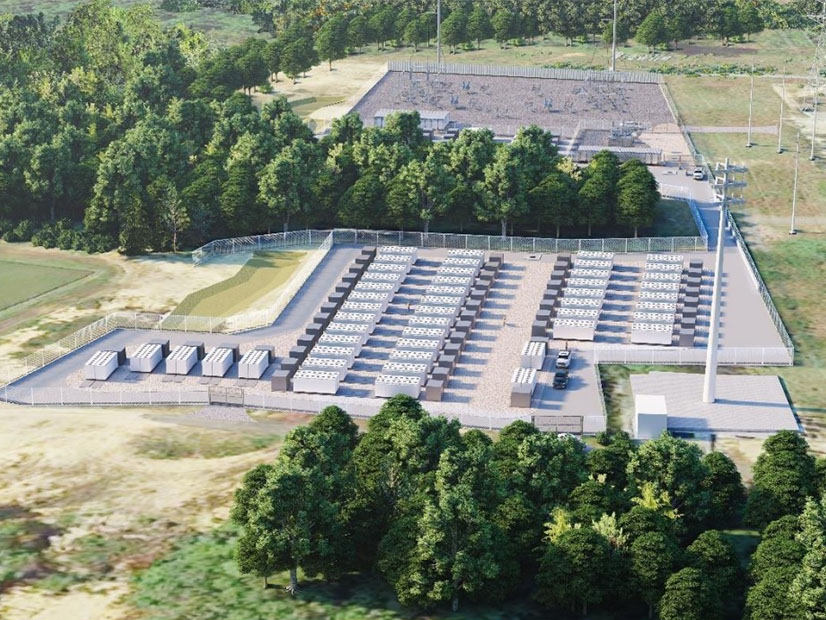
Plus Power, a company based in San Francisco, is proposing to build a 150-MW/300-MWh battery energy storage system south of Boston as traditional fossil fuel plants retire and renewable energy resources grow across the state.
The company filed a petition last week with the Massachusetts Energy Facility Siting Board for approval to build the lithium-ion battery project, called Cranberry Point Energy Storage. It will be the largest bank of standalone batteries in the region and the first of its kind in Massachusetts, according to Plus Power.
The batteries will connect to the ISO-NE transmission system, but they will be a standalone system instead of storing renewable energy generated on site.
Cranberry Point will “decrease future grid congestion in southeast Massachusetts that will be created by new solar generation onshore and the nearby integration of Vineyard Wind and Mayflower Wind offshore wind projects,” Brandon Keefe, general manager of Plus Power, said in a statement to NetZero Insider.
ISO-NE’s forward capacity market auction in February brought a lot of batteries on board for the first time, with 630 MW of new and existing battery storage in total.
Plus Power is responsible for over half of that after winning bids for the Cranberry Point project in Carver, Mass., and a 175-MW/350-MWh system in Gorham, Maine.
The company expects the facilities will be operational by 2024.
Cranberry Point will operate as a generator for ISO-NE instead of delivering energy to end users through a distribution company procurement. It will absorb energy from the grid during times of low demand and release energy into the marketplace at peak hours to avoid outages in case of congestion or a lack of resources.
By storing and saving energy for peak demand hours, the project will help the grid rely less on natural gas or fossil fuel-fired plants. The Cranberry Project represents about 10% of the retiring 1,700-MW Mystic River gas generation units just north of Boston, according to Keefe.
The project is also located near the recently retired Pilgrim nuclear power station in Plymouth, Mass.
“Because the project will help displace non-renewable generating resources while reducing peak demand and system losses and increasing grid reliability, it would also be eligible to contribute to the clean peak standard,” Keefe said.
The Massachusetts Clean Peak Energy Standard program provides incentives to clean energy technologies that supply electricity or reduce demand during seasonal peak periods established by the state Department of Energy Resources.
The battery storage system received approval from the town of Carver’s planning board and conservation commission in 2019 and will help the state meet its goal of deploying 1,000 MWh of energy storage by 2025.
There are several controversial solar projects under development in Carver that would incorporate pole-mounted solar panels over active cranberry bogs to create more space for solar development in the northeast. But there are still questions about how the shade created by the panels will affect crop productivity or the cranberry plants.
But as plans move ahead, Plus Power expects its battery storage project to help incorporate new solar projects into the grid. Construction on the battery system will likely begin in 2023.


